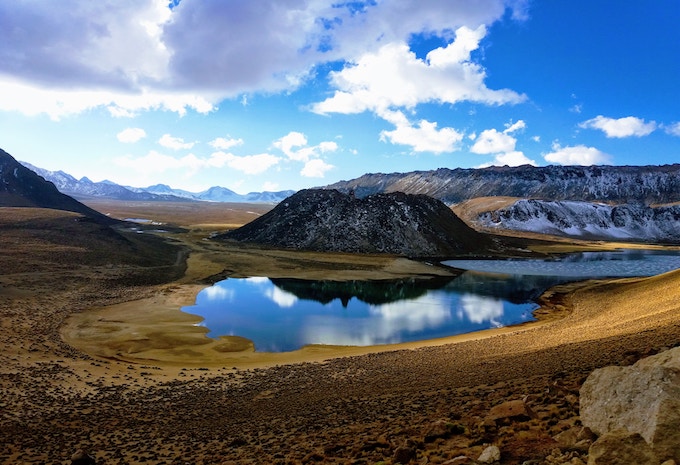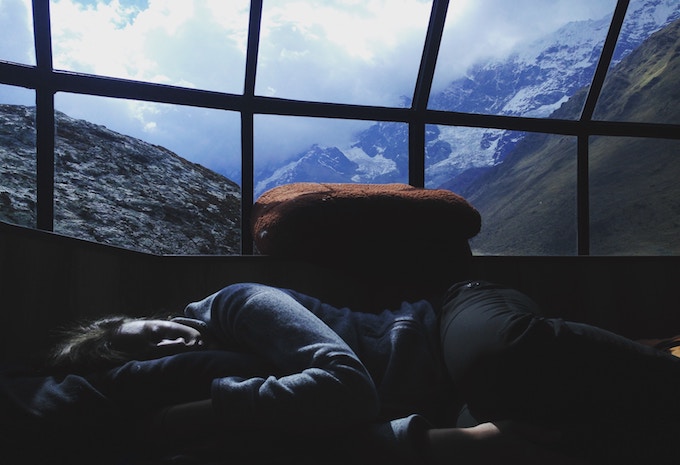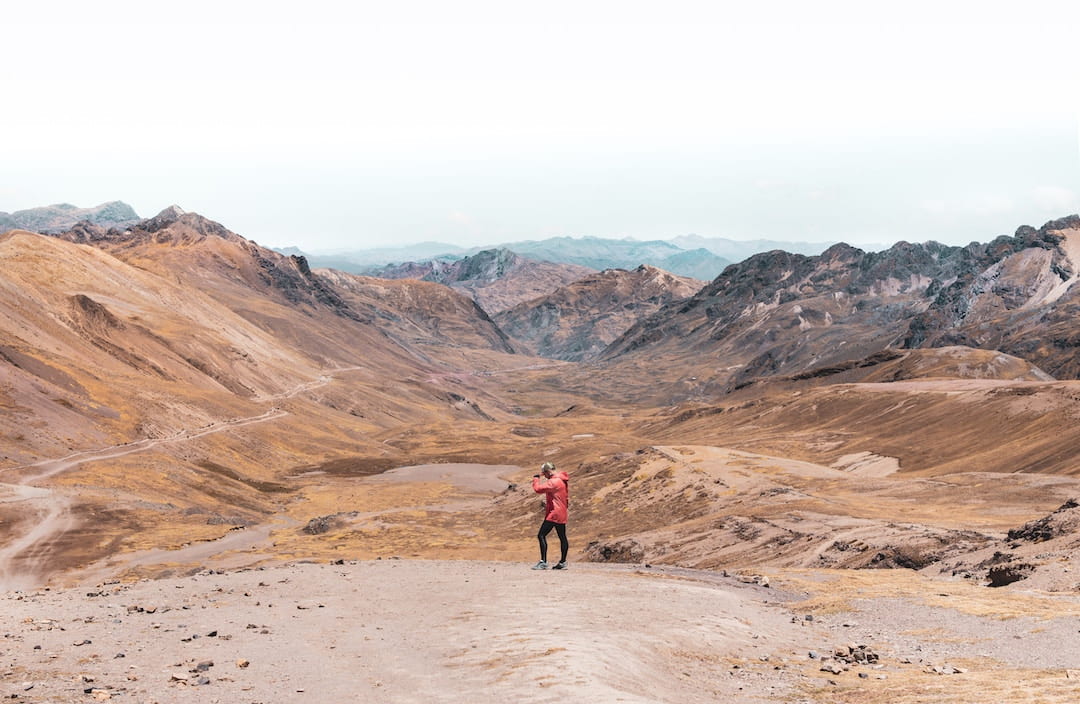With great surfing on the coast and a burgeoning culinary scene, Peru has much to offer, but there’s no bigger draw than its stunning trekking routes. The Andes Mountains, which split the country down the middle, contribute to incredibly diverse landscapes that can only be experienced to their fullest on a hike. Along the way, you’ll catch glimpses of cultural history and remnants of past empires that will inspire and impress you.
Because there are so many great hikes in Peru, it can be hard to know where to begin, but knowing which city you’ll be landing in can help narrow it down. Cities like Cusco, Arequipa, Huaraz, or Chachapoyas are popular starting points where you can acclimatize and recover. Whether you’re looking for a short day hike or a week-long trek, there will be a hike for you!
Cusco
Cusco, the ancient Incan capital, is a city of wonder. Incan and Spanish influences are at play in this charming city that is the starting point for a number of hikes in the Sacred Valley, including the popular Inca Trail. There are a ton of ancient ruins waiting to be explored throughout the Sacred Valley, but Machu Picchu is top of mind for most trekkers, and with good reason – a UNESCO World Heritage Site and one of the most famous archaeological sites in the world, its full of captivating mystery that you just have to see for yourself.
While the Inca Trail is the most popular way to get to Machu Picchu, it can get incredibly busy during high season, and you’ll need to be prepared with a permit.

The Salkantay Trek is an off-the-beaten-track alternative, offering even more stunning views of Peru’s various ecosystems with half the crowd.
With the Lares Trek, you’ll get a more contemporary glimpse into local life on the way to Machu Picchu, and the Ausangate Trek offers a more remote, untouched trek with incredible high-altitude scenery. You’ll pass scenic Rainbow Mountain, which many visitors head to for a day trip. Choquequirao, Machu Picchu’s sister city, is equally worth visiting, with archaeological ruins that are similar to Machu Picchu but still yet to be completely excavated.
Arequipa
Cusco might be impressive as the most enduring city in Peru, but Arequipa’s aesthetic is nonpareil. With its breathtaking plazas to its ornate cathedrals with their chalky-white façades, Arequipa serves as a picture-perfect base for a number of hikes in its surrounding regions.
Explore Colca Canyon for epic views of the canyon’s dramatic depth and soaring Andean condors, or consider scaling El Misti to conquer the towering volcanic peak that dominates Arequipa’s landscape.

Cotahuasi, the world’s deepest canyon, isn’t far from Colca Canyon, but trekking it poses more of a challenge due to its immense depth. There are some great hikes around Laguna de Salinas, where you can see chalky salt flats during dry season and flocks of flamingoes during rainy season, and around Lake Titicaca, the highest navigable lake in the world.
Huaraz
If you’re looking to hike the Cordillera Blanca or Negra, Huaraz will likely be your starting point. High in the mountains in northern Peru, it’s known as the country’s hiking capital, with captivating blue lagoons and gorgeous alpine scenery. If you’re looking for an adrenaline-fuelled adventure, Huaraz is the place to go, and Huascarán National Park is itself home to many trekking routes. You’ll find hikes of many levels here, from day hikes to Laguna 69, Laguna Paron, and Laguna Churup to multi-day treks like the Santa Cruz Trek, which will take you through the Cordillera Blanca mountains on one of the most scenic treks in the world. If you’re looking for a serious challenge, the Huayhuash Trek is a demanding 10-day hike around the Huayhuash mountain range that is a real test of stamina and preparation.

Chachapoyas
An up-and-coming hiking destination in the northern Peruvian Andes, Chachapoyas is home to its own Incan ruins and beautiful natural scenery that must be visited. This is as far away from the touristy trails of Cusco as you can get, while still having access to exceptional hiking and rare views.
Visit the ruins of Kuelap, a Chachapoyan fortress built centuries before Machu Picchu, and the thundering Gocta Waterfall, one of the highest in the world. A recently installed cable car to Kuelap gives visitors a welcome boost to the ruins, but you can also get to both of these remarkable sights on the Gran Vilaya Trek, which offers panoramic views and friendly encounters with locals.
Hiking Tips
Hiking in Peru is no small feat, and requires lots of mental and physical preparation – not to mention a ton of planning. To make sure you get what you want out of this once-in-a-lifetime experience, here are some things to consider.

When to Go
Peru has two seasons: dry season, which goes from May to September, and wet season, from November to March. Trails are more crowded during dry season, which sees mostly clear skies and warm weather. Hiking during wet season can be a bit more unpredictable and trails can become slippery with rain, but is still doable – some seasoned hikers may even prefer it to the larger crowds and inflated prices of dry season. Keep in mind, though, that some hikes can be riskier during wet season – canyon treks may be more at risk for landslides, and some passes might be too flooded to cross. While Machu Picchu is open year-round, the Inca Trail is closed in February for maintenance and trail recovery, and many tour operators in Huaraz don’t offer tours in the rainy months of February and March.
Packing
When setting off on a multi-day trek, packing light is key. On guided tours like the Inca Trail, your baggage will be carried by porters and subject to a weight limit. If you’re heading out on your own, you’ll want to pack only what you need so that the weight will be manageable throughout your hike.
On the trails at altitude, the temperature can fluctuate wildly from dawn to dusk, so even though you’ll be stripping off layers during the day, you’ll want to pack layers to keep you warm at nighttime. If you’re hiking during wet season, it’s even more important to bring lightweight raingear that will protect you against potential morning downpours. Essentials include camping gear like sleeping bags and tents, dependable hiking footwear, protection against the sun like hats and sunscreen, and a reusable drinking bottle (single-use plastic is banned on Machu Picchu). Because the facilities along the way are often minimal, you might want to throw in a roll of toilet paper and some hand sanitizer as well.
Altitude
Underestimating the effects of Peru’s high altitude can be the difference between a great trip or a terrible one. It’s one of the biggest challenges faced by even the most experienced hikers. Symptoms of altitude sickness include nausea, headache, and fatigue, and can kick in at 2500m above sea level where the air is thinner and your body receives less oxygen. Most of Peru is over 2500m above sea level – you might even feel the effects of altitude on arrival.
Acclimatizing is imperative to making sure your hike won’t be spoiled, so make sure you spend at least 24-48 hours in your base city before heading out on a trek. On your ascent, staying hydrated and ascending slowly helps prevent the effects of altitude. If you begin to feel symptoms along the way, take a break to adjust. Coca leaves are a common remedy, and chewing on them or drinking coca tea can help ward off the effects of altitude.

Preparation
When choosing the trail you want to take, consider whether you want to hire a guide. Most hikes can be done independently, but if you’re a relatively inexperienced trekker, a guide can be really helpful to navigate any challenging parts of a trail. If you want to hike the Inca trail, you’ll need one from an approved tour company, as well as a permit which, because they are limited in an effort to preserve the heritage site, you’ll need to acquire well in advance. If you’re going without a guide, make sure you share your plans with someone in case of emergency.
Hiking in Peru requires a definite level of fitness, so be sure to prepare physically for some strenuous hiking at altitude. You might want to incorporate some more physical activity in your day-to-day in the weeks leading up to your trip, and start with some easier day hikes upon arrival to amp yourself up for longer multi-day treks. Before you head out, check that you have all the vaccinations you might need, and if you’re planning on purchasing travel insurance, make sure your policy will cover high-altitude treks, which are sometimes excluded in basic plans.


